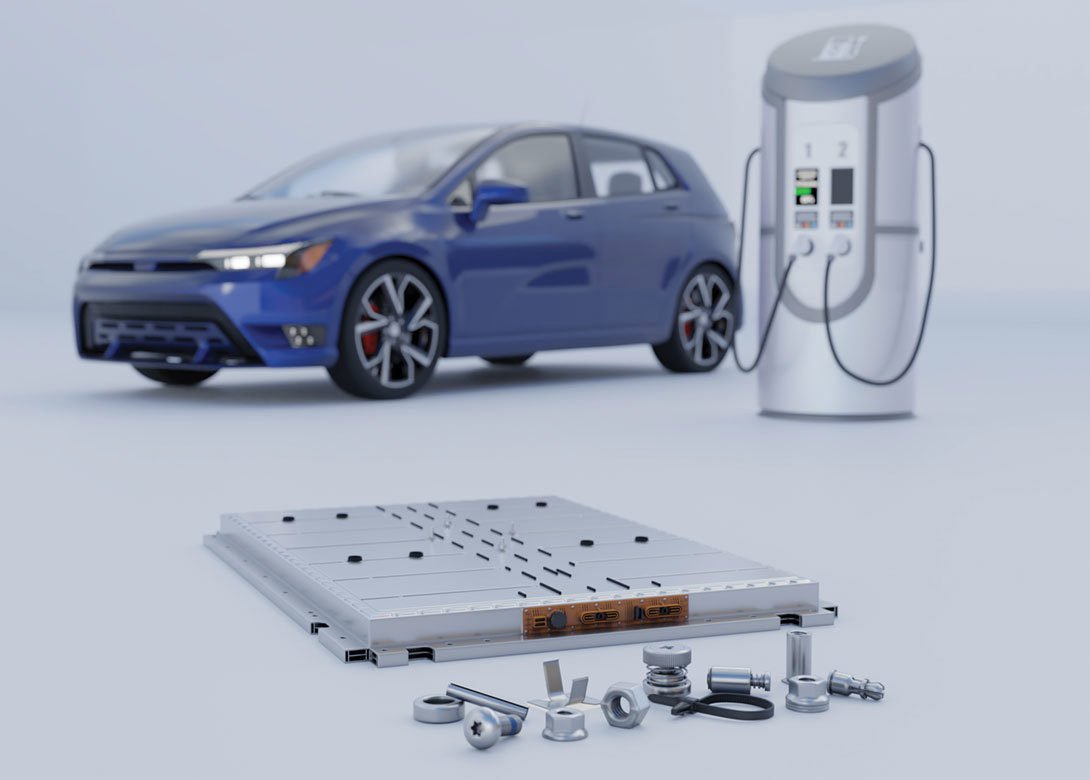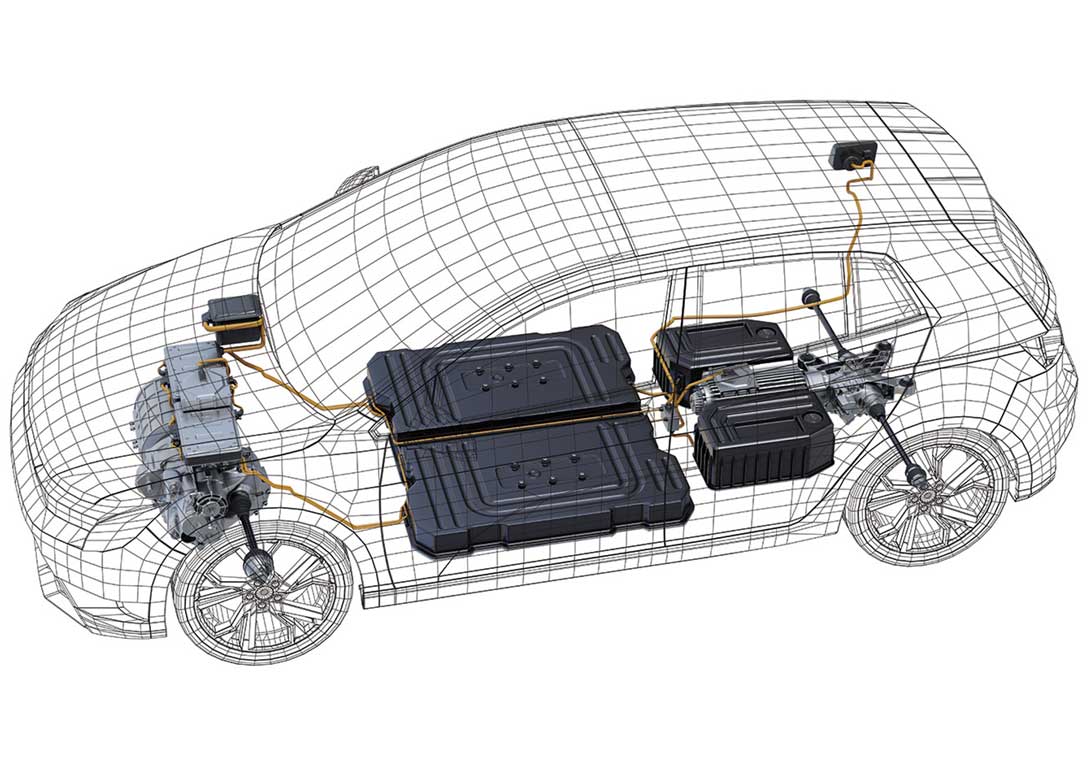
Catastrophe theory is a branch of mathematics that looks at sudden and often unexpected change – such events are usually both good and bad. They can be anything from a bent ruler suddenly flexing the other way to the spread of a new virus – and they’re not unforeseen by everyone. Bill Gates warned of a virus pandemic five years ago. However, selling prevention is always much harder than selling cures.
When a catastrophe is underway changes can be rapid, as can human responses to them. Everyone can see that the Covid-19 pandemic is firstly a health issue, but it will go on to affect much more than that. Mathematicians are not the only people trying to see where things are going. Engineers are too, including those in the fastener and fixing business.
How will recent trends, reinforced by the pandemic, affect transport and what developments will the fasteners business have to make to support them? Will there be much less travelling and will people eschew public transport to avoid getting close to others? Will travel and transport broaden out into mobility, with a much wider range of vehicles and their operation?
TR ponders the issues
Some 34% of TR Fastenings Ltd’s business is in automotive, so the company has a great interest in where the business is going. In 2018 TR Fastenings celebrated 45 years of ‘holding the world together’. Today, it has some 1,300 colleagues working in 32 divisions in 18 countries across three continents, with three technical and innovation centres located in the UK, the USA and Sweden.
TR’s first centre opened in 2018 and is in the heart of Sweden’s automotive industry, on the Lindholmen Science Park in Gothenburg, which is home to many of the key players developing forward-thinking solutions for the automotive market, including Electric Vehicle (EV) technology. With major OEM firms and IT software developers, and technical and engineering teams from tier 1 manufacturers, Lindholmen is fast becoming a hub for automotive innovation in Europe.
Through the work at the technical centre, Sven Brehler, engineering project manager at TR, believes that there will be a transition from automotive to mobility. “We use the term mobility because there may be a lot of changes following coronavirus. For example, it may hasten people towards electric, self-driving vehicles. The whole automotive sector might actually physically change away from the combustion engine and steering wheel control.”
But will the adoption of electric propulsion make that much difference to the fasteners used in vehicles? Brehler thinks it will. He continues: “Electric vehicles are designed on such a different platform – for example we can drive individual wheels or we can work though a gearbox or converters – we have many more choices than we have with a conventional car. We use the term mobility because units may become smaller, if we can get round the status symbol element of a car, particularly in the UK.”
“Home deliveries from companies such as Amazon, and supermarkets, etc, have increased dramatically during the lockdown and if autonomous vehicle development is pushed forward, we might be able to include that in mobility as well. We don’t know yet what directions such things might take.”
Being ready for such changes is not easy and companies will need to watch the market closely and move quickly. TR is watching the mobility business with keen eyes as a large proportion of its sales are in that area and it’s increasing. The company’s automotive business has just hit 34% of sales and could go higher as this sector becomes mobility. Smaller vehicles may mean more vehicles, thus more fasteners.
Even though the automotive industry is currently hard hit by the effects of coronavirus, the mobility industry will remain an important sector in the near future. There will likely be some large changes to the current automotive industry in the next decade, and the need for individualised mobility will rise. Therefore, the company expects the mobility industry to be a large part of its future business, but with more diversification into other markets, such as healthcare and automation.
Brehler continues: “The new technologies required for development and maturation of the New Energy Vehicles (NEVs), and the subsequent energy supply, has seen a large influx from technologies developed in other industries, such as the mobile technology and aerospace market. Our expertise in high-tech applications, electronics, and electrical switch gear, has allowed TR to follow and support the advances in electrical propulsion, storage, charging and infrastructure for the transport of tomorrow.”
“The current standstill of production has allowed the OEM and tier 1 suppliers to take stock of their current designs and projects still in the pipeline, the main focus being on overall reduction of cost and weight without compromising on the current designs. They start to contain more mixed materials, including composites and honeycomb structures, which benefit from bonding. However, adhesives need large contact points between the materials to be able to create structural joints, favouring mechanical fasteners for lean and slender designs. Furthermore, a refocus on maintenance and repair, as well as reuse and recyclability, prefer the application of removable fasteners.”
What effect will NEVs have on fastener demands? Interior and trim applications are expected to maintain a similar route to reduce weight whilst promoting an increased modularity to allow customers’ individualism at lowest assembly costs. The greatest disruption to the original bill of materials will come from the change in propulsion and the safe storage of on-board energy.
Ensuring safe storage and delivering it to the propulsion on demand requires electronic control mechanisms, which cannot be disrupted by electromagnetic waves or affected by corrosion, contamination or moisture. This is where there will be a growth in uptake of isolating coatings and non-magnetic fasteners. Initial NEV designs used bolted on batteries, whereas new designs are looking to integrate the battery assembly as part of the structural design of the vehicle. Battery retention bolts and compression limiters are playing a large role in the materialisation of these designs to allow transfer of forces through the structure, whilst also allowing access for repair and maintenance. Well designed cable management will secure the ever growing wiring looms for delivery of energy to all parts of the vehicle and report back any key information picked up by the multiple sensors.

Quality and recycling
Reliability and quality are controlled through fastener traceability from manufacturers on the AVL (approved vendor list), which are signed up to TR’s code of conduct following a thorough auditing programme. This avoids the introduction of counterfeit or products with questionable quality to enter the supply chain. Brehler says: “Early involvement of application engineers allow our customers to optimise the design by selecting the right product to suit the requirements. System testing has been a mandatory requirement within the automotive industry. We cannot stress enough the importance of these tests as they can make a difference in case of a vehicle accident. The PPAP (production part approval process) proves that parts are manufactured to the required standards.”
“The majority of fasteners have a high content of steel, which can generally be reused in the recycling process. The automotive industry has been a forerunner restricting dangerous materials, making recycling of fasteners possible without the need of firstly needing to separate them from the rest of the scrap. Our plastic fasteners are generally manufactured of similar hydrocarbons used in trim and interior applications, allowing these parts to follow the main recycling stream. When involved with new projects and applications TR’s application engineers consider the removability of the fasteners, as well as the installation and function during operation.”
Conclusion
Responding to the Covid-19 pandemic will require a huge range of responses from many industries and the companies. For instance, transport will probably never be the same again. There will be winners and losers and in some cases it will be extreme. As Zoom is finding in the IT sector, it is an ‘ill wind that blows no one any good’.

Don't have an account? Sign Up
Signing up to FastFixTechnology.com enables you to manage your account details.